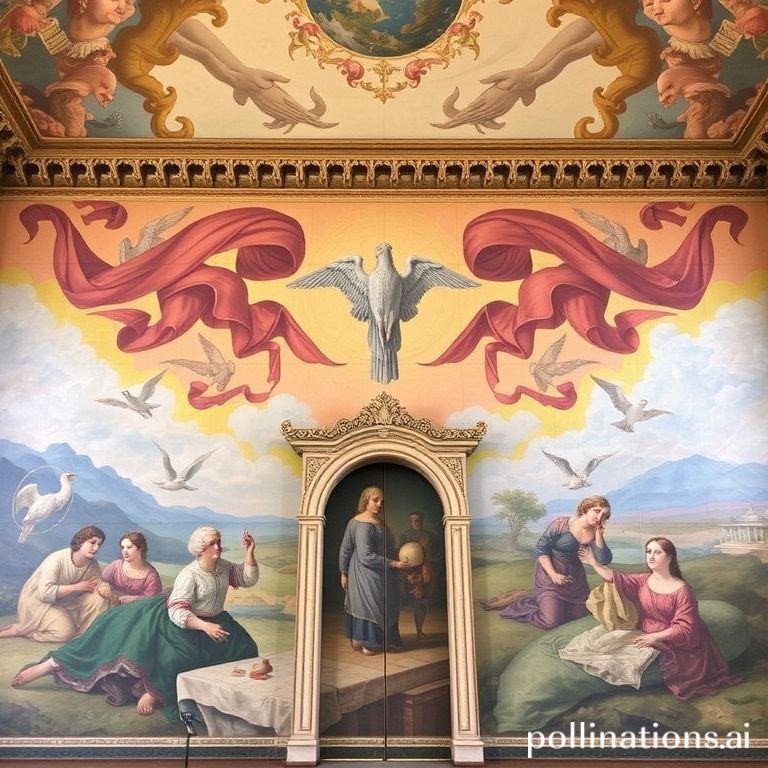The Palacio de Bellas Artes in Mexico City is more than just a stunning architectural masterpiece; it’s a treasure trove of Mexican art history. Among its many attractions, the murals that adorn its walls are particularly captivating. These aren’t mere decorations; they’re powerful visual narratives that explore Mexican identity, history, and social struggles. Stepping into the Palacio is like stepping into a vibrant, painted history book.
From the moment you enter the Palacio, you’re surrounded by the ambition and scale of these artistic endeavors. The murals, created by some of Mexico’s most celebrated artists, offer a unique glimpse into the country’s soul. They reflect a period of intense national self-reflection following the Mexican Revolution, a time when artists sought to define and celebrate their culture.
The Masters Behind the Murals
The Palacio de Bellas Artes houses murals by some of the most prominent figures in Mexican muralism, including Diego Rivera, David Alfaro Siqueiros, José Clemente Orozco, and Rufino Tamayo. Each artist brought their unique style and perspective to the walls of the Palacio, creating a diverse and compelling collection.
Diego Rivera’s “Man, Controller of the Universe”
Perhaps the most famous mural in the Palacio is Diego Rivera’s “Man, Controller of the Universe” (El Hombre Controlador del Universo). Originally commissioned for Rockefeller Center in New York City, the mural was destroyed due to its inclusion of a portrait of Vladimir Lenin. Rivera recreated the mural in the Palacio de Bellas Artes, making it a potent symbol of artistic freedom and social commentary. The mural depicts a worker controlling machinery, surrounded by scenes of scientific and social progress, while capitalism and fascism are depicted in scenes of destruction. It’s a powerful statement about humanity’s potential and the dangers of unchecked power.
David Alfaro Siqueiros’ “New Democracy”
Siqueiros’ “New Democracy” (Nueva Democracia) is another iconic mural within the Palacio. This dynamic and emotionally charged work depicts a woman breaking free from chains, symbolizing the liberation and empowerment of the Mexican people. Siqueiros used innovative techniques, including airbrushing and industrial paints, to create a sense of movement and drama. The mural reflects his radical political views and his commitment to using art as a tool for social change.
José Clemente Orozco’s “Catharsis”
Orozco’s “Catharsis” is a powerful and disturbing vision of human suffering and societal decay. The mural depicts scenes of war, violence, and moral corruption, reflecting Orozco’s pessimistic view of human nature. While less overtly political than the works of Rivera and Siqueiros, “Catharsis” is a profound meditation on the destructive forces that plague humanity. Its dark tones and chaotic composition create a sense of unease and provoke viewers to confront the darker aspects of the human experience.
Rufino Tamayo’s “Mexico Today” and “Mexico of Today”
In contrast to the more politically charged works of his contemporaries, Rufino Tamayo’s murals, “Mexico Today” and “Mexico of Today,” offer a more abstract and symbolic representation of Mexican identity. These murals blend pre-Columbian motifs with modern artistic styles, creating a unique visual language that celebrates the country’s rich cultural heritage. Tamayo’s use of vibrant colors and geometric forms adds a sense of dynamism and optimism to the Palacio’s collection.
Visiting the Palacio de Bellas Artes: Tips for Mural Appreciation
To fully appreciate the murals at the Palacio de Bellas Artes, consider these tips:
- Take your time: The murals are large and complex, so allow ample time to explore them thoroughly.
- Do some research beforehand: Familiarize yourself with the artists and their historical context to gain a deeper understanding of the murals’ meanings.
- Look closely at the details: Pay attention to the individual figures, symbols, and artistic techniques used by each artist.
- Consider the overall message: Reflect on the themes and ideas that the murals convey about Mexican identity, history, and society.
- Attend a guided tour: Knowledgeable guides can provide valuable insights and interpretations of the murals.
Conclusion
The murals of the Palacio de Bellas Artes are an essential part of Mexico’s cultural heritage. They represent a pivotal moment in the country’s history when artists sought to define and celebrate their national identity through powerful visual narratives. Whether you’re an art enthusiast or simply curious about Mexican culture, a visit to the Palacio de Bellas Artes is an unforgettable experience. The murals offer a glimpse into the soul of Mexico, inviting you to reflect on its past, present, and future.
Ready to explore more of Mexico’s artistic treasures? Check out our other articles on iconic landmarks and cultural experiences!
IMAGE: A wide-angle shot inside the Palacio de Bellas Artes in Mexico City, focusing on Diego Rivera’s “Man, Controller of the Universe” mural. The scene is filled with natural light streaming through the windows, illuminating the vibrant colors and intricate details of the mural. The perspective captures the grandeur of the Palacio’s architecture, with its Art Deco style and ornate decorations. In the foreground, a few visitors are admiring the mural, adding a sense of scale and human presence. The overall mood is awe-inspiring and educational, showcasing the artistic and historical significance of the Palacio. Style: Realistic, vibrant, and detailed.


